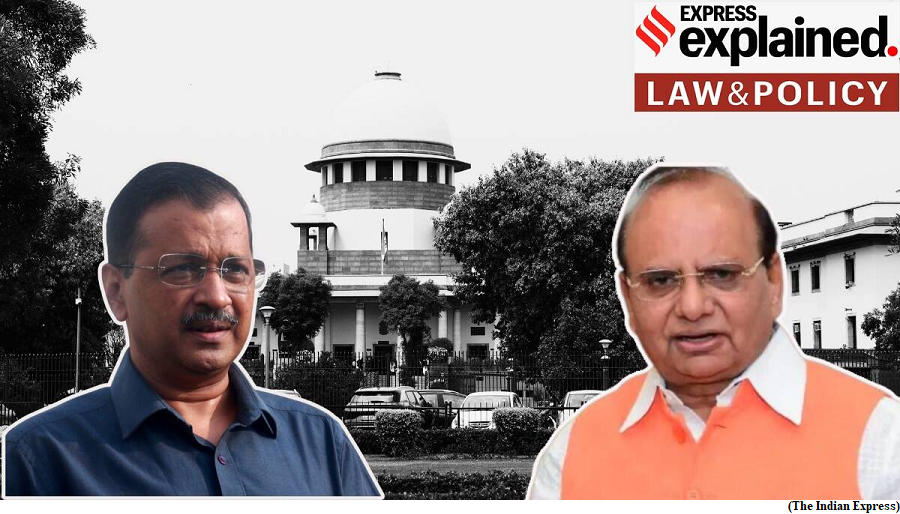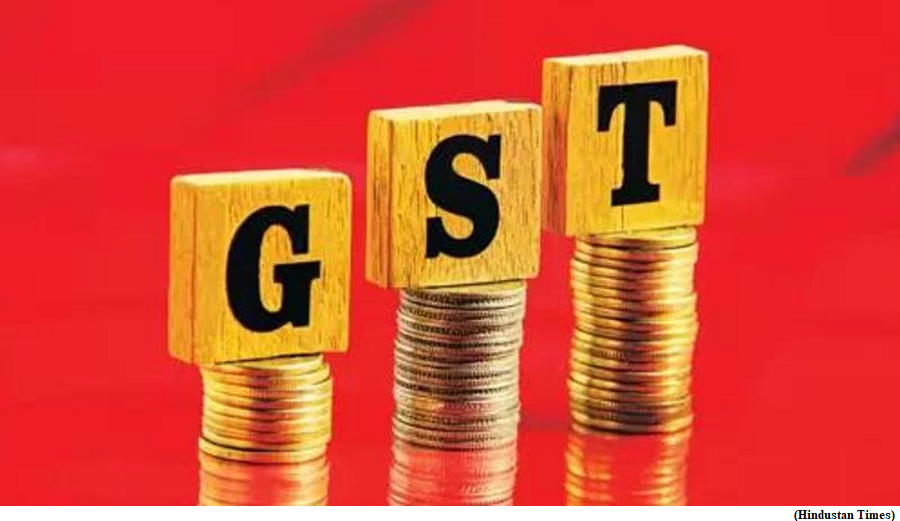SC verdict on control over services: What tilted scales in Delhi’s favour (GS Paper 2, Judiciary)

Why in news?
What was the issue before the Court?
- In 2015, a Union Home Ministry notification said that the Lieutenant Governor of Delhi shall exercise control over “services”. The Delhi government challenged this before the Delhi High Court, which in 2017 upheld the notification. On appeal, a two-judge Bench of the Supreme Court referred the issue to a larger constitution Bench.
- In 2018, a five-judge Constitution Bench, headed by then CJI Dipak Misra, in a unanimous verdict laid down the law that governs the relationship between Delhi and the Centre. The ruling was in favour of the Delhi government.
- In 2019, two judges, (who were also part of the larger 5-judge Bench in 2018), Justices Ashok Bhushan and AK Sikri, delivered a split verdict on the specific issue of “services.” The split verdict then went to a three-judge Bench and eventually a five-judge Constitution Bench, which has now delivered its verdict.
What was the bone of contention?
- The court had to decide if it was the Delhi government or the Union government that had legislative and executive control over the capital’s bureaucracy.
- The court had to interpret clause (3)(a) of Article 239AA (Special provisions with respect to Delhi) of the Constitution.
- It reads: “Subject to the provisions of this Constitution, the legislative assembly shall have power to make laws for the whole or any part of the National Capital Territory with respect to any of the matters enumerated in the State list or in the Concurrent list in so far as any such matter is applicable to union territories except matters with respect to….”
What was the Centre’s argument?
- The Centre’s argument was that in the 2018 ruling, the court did not analyse two crucial phrases in Article 239AA(3)(a). First was “ insofar as any such matter is applicable to union territories” and the second was “subject to the provisions of this Constitution.”
- The Centre argued that since no Union Territory has power over services, Delhi too could not exercise such power. Essentially, Delhi could only legislate on issues that other Union Territories are explicitly allowed to legislate upon.
What did the court decide?
What is the extent of Delhi’s powers now?
New GST compliance measures
(GS Paper 3, Economy)
Why in news?
- In two significant measures to curb tax evasion and increase compliance under the Goods and Services Tax (GST) regime, the government has decided to lower the threshold for businesses to generate e-invoice for business-to-business (B2B) transactions, from Rs 10 crore to Rs 5 crore, and has rolled out the automated return scrutiny module for GST returns in a backend application for central tax officers.
- Amid rising instances of GST frauds and cases of fake invoices, these changes are expected to broaden the compliance mandate for more businesses, especially small and medium enterprises and also help boost the GST revenue collections.

What is the automated return scrutiny module?
- It will enable the officers to scrutinise GST returns of centre-administered taxpayers selected on the basis of data analytics and risks identified by the system.
- Discrepancies on account of risks associated with a return will be displayed to the tax officers.
- They will interact with the taxpayers through the GSTN common portal for communication of discrepancies noticed in returns and subsequent action in form of either issuance of an order of acceptance of reply or issuance of show cause notice or initiation of audit/investigation.
- The automated return scrutiny module has already commenced with the scrutiny of GST returns for FY 2019-20, with the requisite data already with the tax officers.
What are the changes for e-invoicing?
- The government has also lowered the threshold for businesses to generate e-invoice for business-to-business (B2B) transactions to Rs 5 crore from Rs 10 crore under GST. The changes will come into effect from August 1.
- At present, businesses with turnover of Rs 10 crore and above are required to generate e-invoice for all B2B transactions.
What does the e-invoicing envisage?
- The GST Council in its 37th meeting in September 2019 had approved the standard of e-invoice with the primary objective to enable interoperability across the entire GST ecosystem.
- Under this, a phased implementation was proposed to ensure a common standard for all invoices, that is, an e-invoice generated by one software should be capable of being read by any other software and through machine readability, an invoice can then be uniformly interpreted.
- With a uniform invoicing system, the tax authorities are able to pre-populate the return and reduce the reconciliation issues.
- E-invoicing was initially implemented for large companies with turnover of over Rs 500 crore, and within three years the threshold has now been lowered to Rs 5 crore.
Way Forward:
- While the reduction in the e-invoicing threshold is seen as an important factor for boosting GST revenue collections and checking frauds, it will also increase compliance requirements for smaller businesses.
Key takeaways from Supreme Court’s Maharashtra verdict
(GS Paper 2, Judiciary)
Why in news?
- Passing a unanimous judgement on the various issues related to the split in Shiv Sena in June 2022, the Supreme Court recently made strong observations about the role of the then Governor of Maharashtra and the Speaker of the Legislative Assembly.
- The court, however, refrained from interfering with the proceedings related to disqualifying 16 MLAs, including Chief Minister Eknath Shinde.

Key Highlights:
Speaker to decide disqualification:
Speaker must consider Shiv Sena constitution
- The SC said that while deciding disqualification pleas, the Speaker must consider the constitution of the Shiv Sena, which was submitted to the Election Commission (EC) with the consent of both the factions. It said that as the Tenth Schedule’s third paragraph has been removed, the ‘split’ in the party will no longer be a defence available to MLAs facing the proceedings.
- Paragraph 3 of the Tenth Schedule protected defectors as long as one-third of the members of a political party formed a separate group.
- It was removed by the Constitution (91st Amendment) Act, 2003, which came into effect on January 1, 2004. The Court asked the Speaker to first determine which of the factions constitute the political party and take the call without being influenced by the ECI order in that regard.
- The Bench said the Speaker must not decide which faction constitutes the political party on the “blind appreciation” of which group had a majority in the Assembly.
Governor didn’t act in accordance with law:
- The court said that then Maharashtra Governor Bhagat Singh Koshyari was not justified in calling for a floor test on June 30, 2022, as he did not have objective material to show that the incumbent government had lost the confidence of the House.
- The court said the Governor had acted upon an inference that a section of the Shiv Sena wished to withdraw their support to the government, even though the communication by some of the MLAs only expressed discontent about the Maha Vikas Aghadi alliance.
- It said that the power of the Governor to act without the aid and advice of the Council of Ministers is of an extraordinary nature, and must be exercised with circumspection within the limits of law.
- It also said that the Governor is not empowered to enter the political arena and play a role in inter or intra party disputes.
Can’t reinstate Uddhav govt as he resigned
- The Thackeray group had sought to restore the situation prior to June 29, 2022, seeking a ruling that Uddhav Thackeray’s government be reinstated. However, the court said Thackeray did not face the floor test on June 30 and resigned.
- The SC held that despite the Governor not having reasons to reach the conclusion that Thackeray had lost the confidence of the House, it could not quash a resignation submitted voluntarily. The court said had Thackeray refrained from resigning, it could have considered a remedy to reinstate his government.
Appointment of whip from Shinde group illegal
- As the Shiv Sena MLAs’ rebellion was unfolding, on June 21, 2022, the party chief whip, Sunil Prabhu, issued a whip directing all the MLAs to attend a meeting at CM Uddhav Thackeray’s residence. Those in attendance passed a resolution to remove Eknath Shinde as Group Leader of its legislative party.
- The Shinde-led faction then issued its own resolution, removing Prabhu as the whip and appointing Bharat Gogawale in his place. After assuming office, Speaker Rahul Narvekar recognised Gogawale as the whip.
- The SC said the Speaker did not attempt to identify which of the two persons were authorised by the political party, adding the Speaker should have conducted an independent inquiry based on the rules of the party.
- It deemed the Speaker’s decision recognising Gogawale as the whip to be illegal, as he had not verified if it was the decision of the political party.
Legislature party, political party distinct:
Speaker and EC can adjudicate issues concurrently
- The court said it could not accept the Thackeray group’s contention that the EC was barred from deciding on the party symbol dispute until the Speaker decided the disqualification pleas before him.
- The court said this would amount to “indefinitely staying proceedings before the ECI”, as the Speaker’s decision would attain finality only after the appeals against his decision were disposed of.
Referral of Nabam Rebia case to larger bench:
- The five-judge Bench referred certain issues related to its 2016 judgment in the Nabam Rebia case to a larger Bench. One of the issues is whether a notice for removal of a Speaker would restrict the powers of the Speaker to issue disqualification notices to MLAs.




